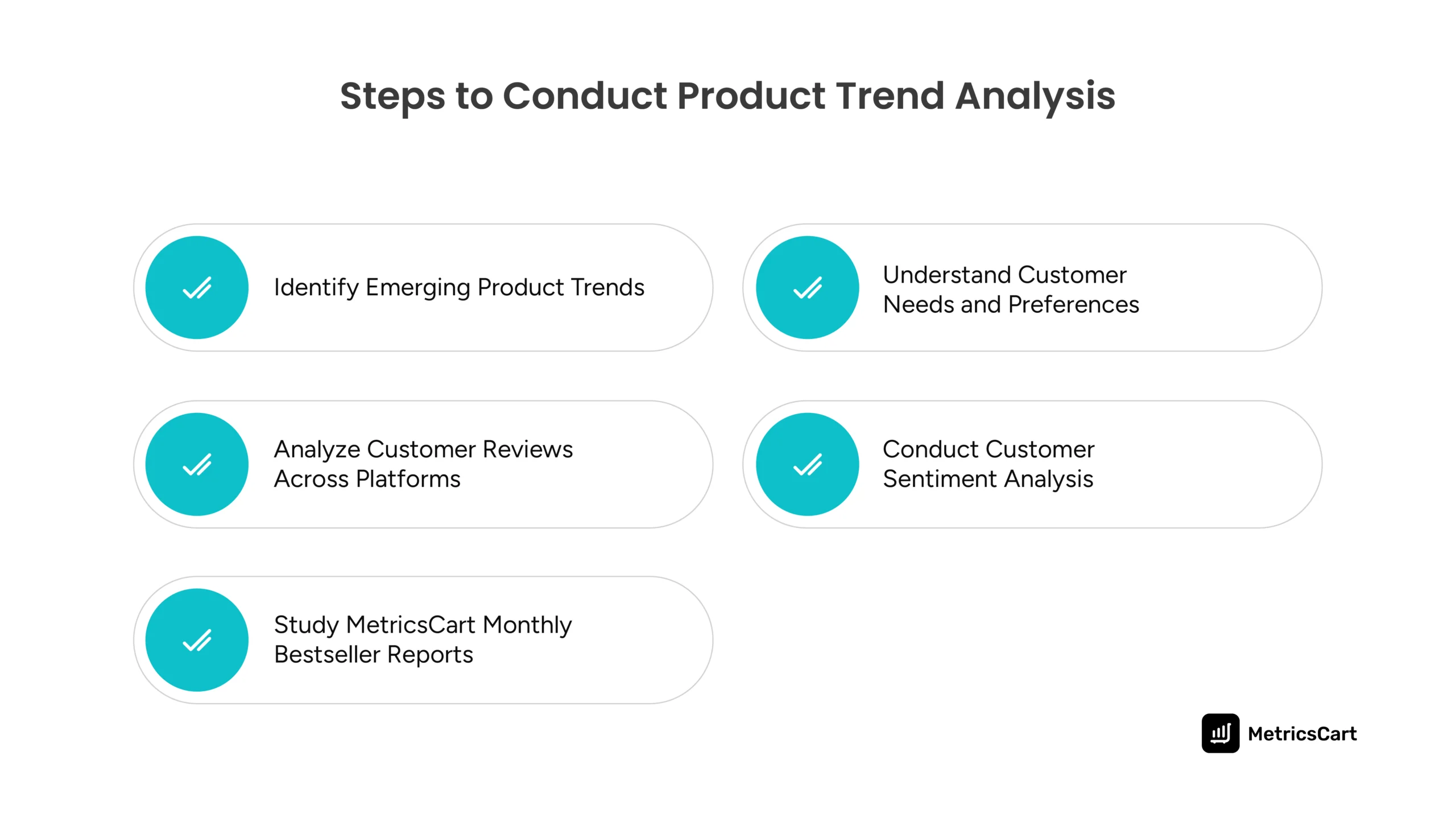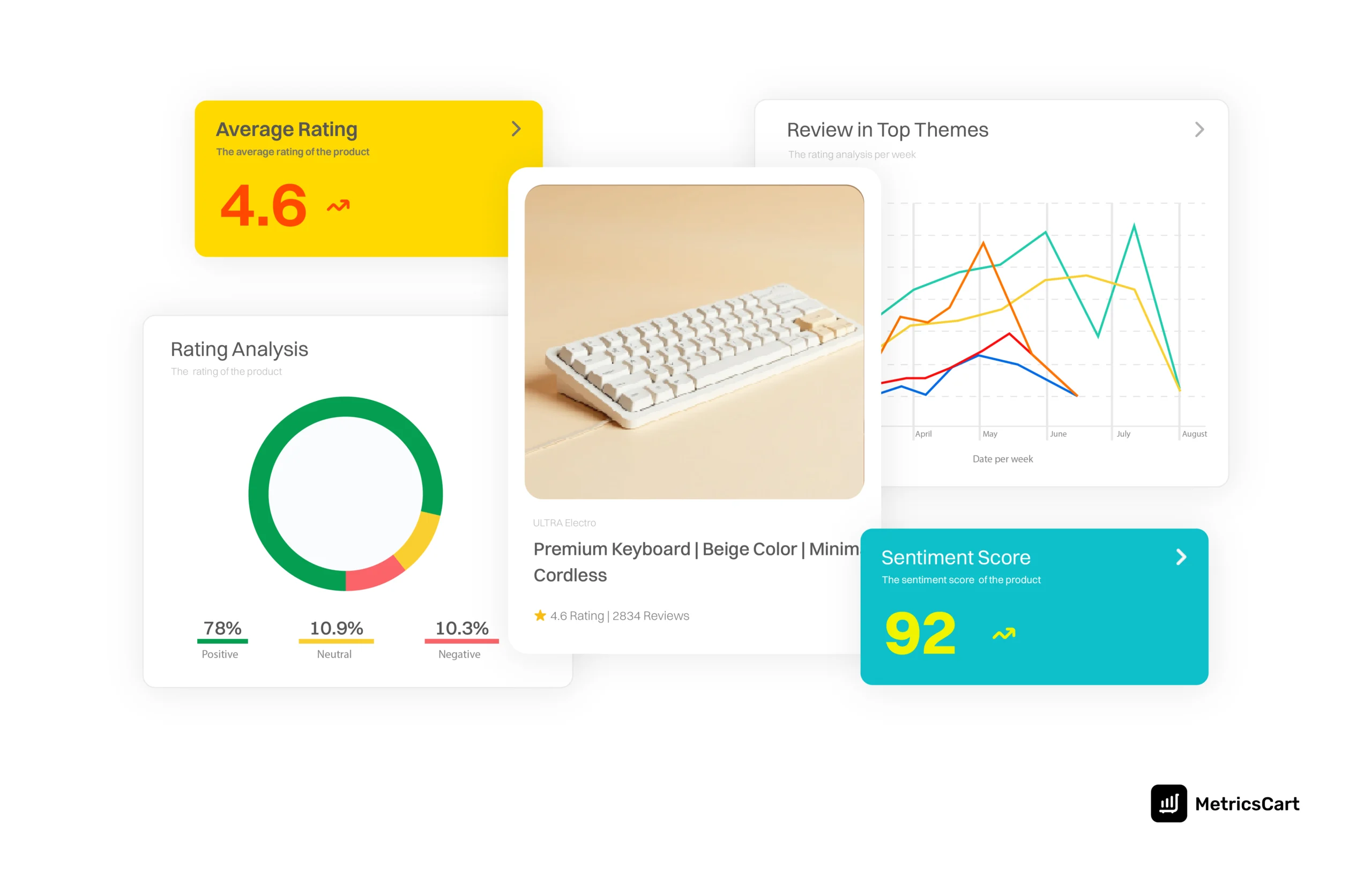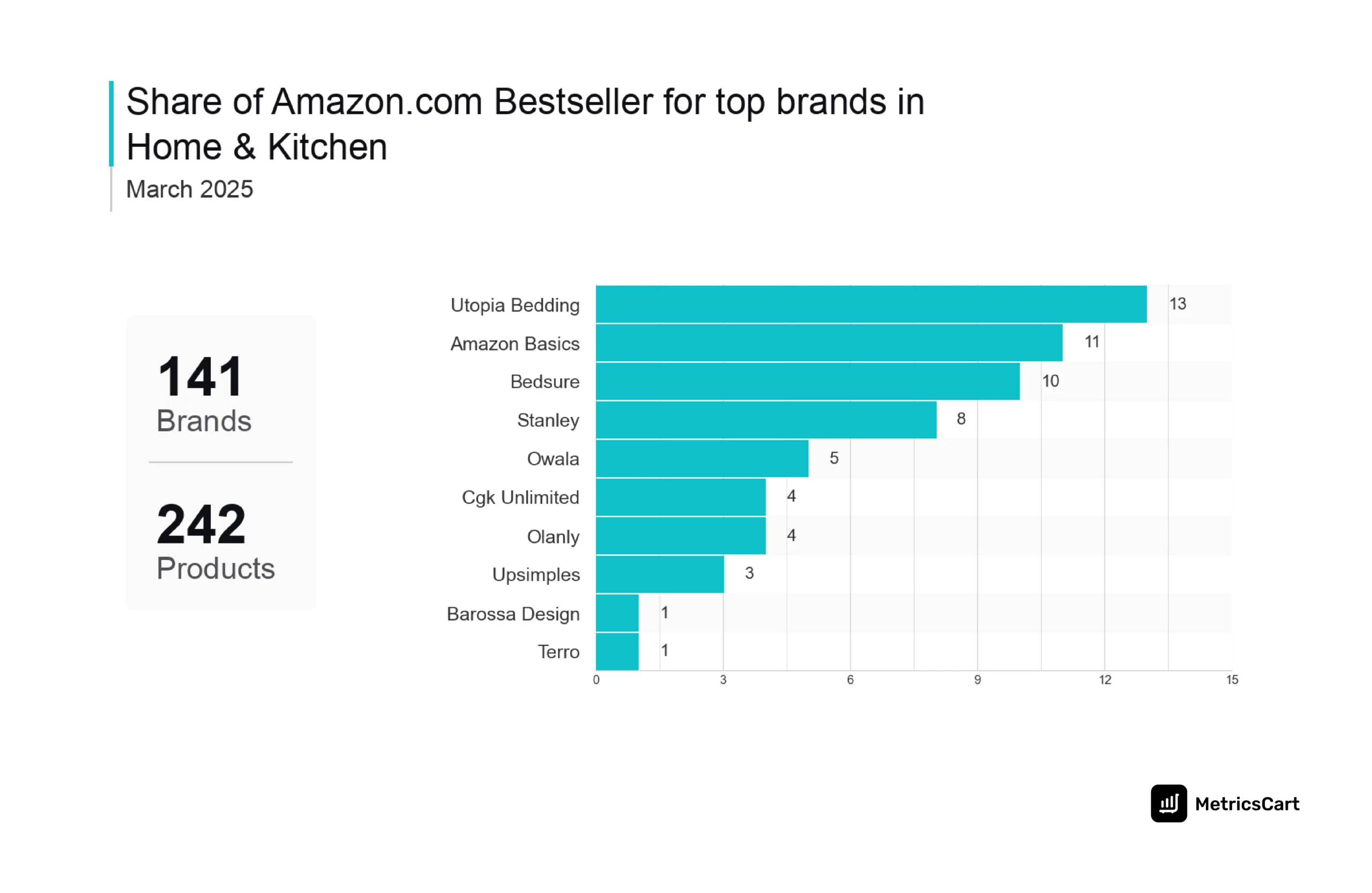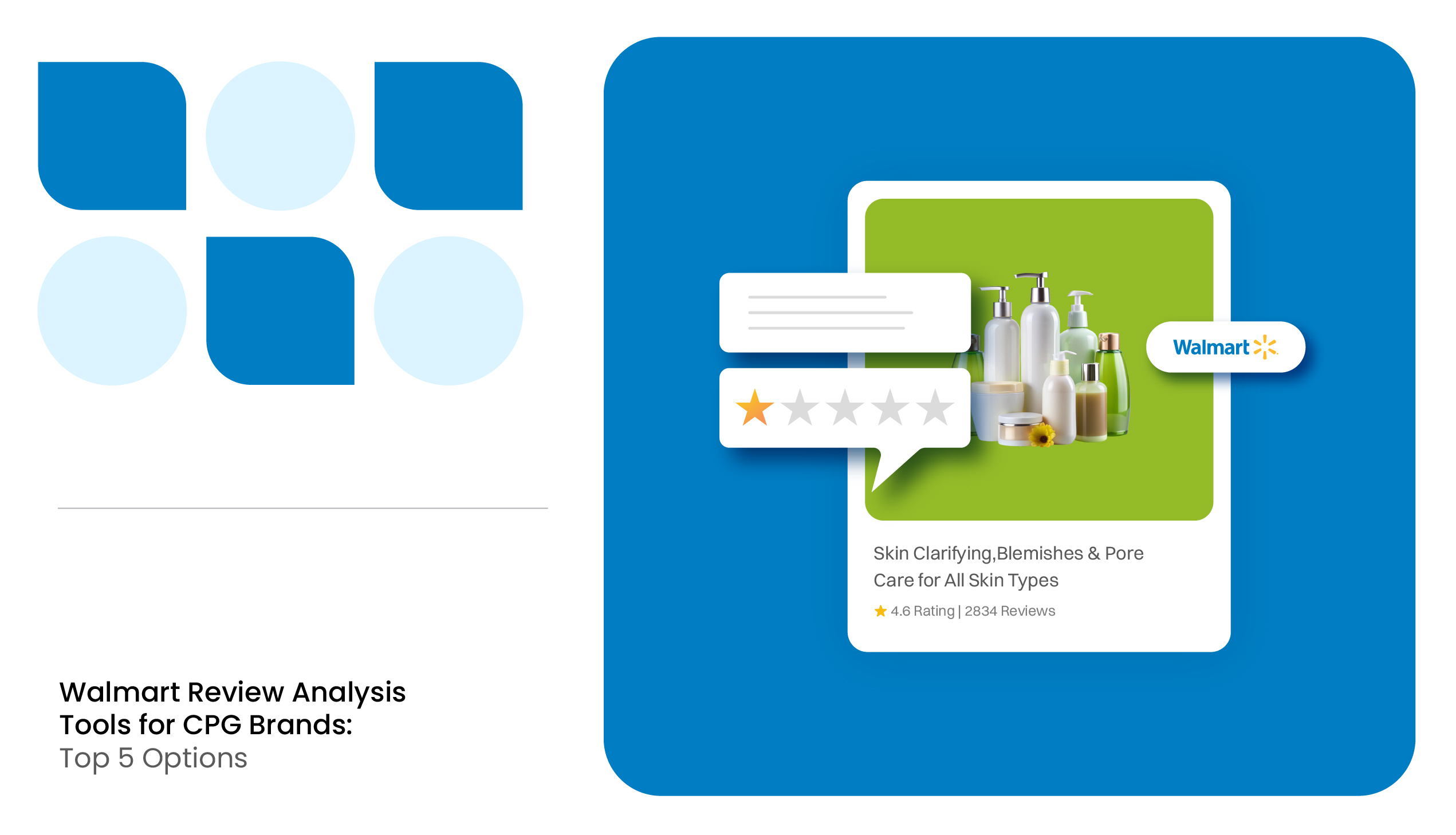In e-commerce, the pressure is always on to launch products that resonate, avoid costly misses, and stay one step ahead of competitors.
But let’s face it: Predicting exactly what customers want next isn’t easy. Even seasoned product teams often find themselves guessing, chasing trends that vanish as quickly as they appear.
What if you could replace guesswork with certainty? What if, instead of reacting to market shifts, your team could anticipate customer desires and confidently innovate ahead of your competitors?
That’s where product trend analysis comes in. It is a strategic approach to understanding exactly what consumers want, when they want it. Think of it as your secret weapon for uncovering actionable insights in ratings, reviews, bestseller reports, and market data.
What is Product Trend Analysis?
Product trend analysis is the process of reviewing past and present consumer data to identify patterns and predict where the market is headed. In simple terms, it means studying how products are performing over time and how customer preferences are changing.
This involves gathering data from multiple sources, such as internal sales figures and web analytics, as well as external signals like social media buzz or customer review trends. By uncovering these patterns, companies can anticipate shifts in demand and adjust their strategy accordingly.
For instance, if the sales for reusable water bottles have been climbing steadily every month, while single-use bottle sales decline. Through product trend analysis, you can link this trend to a rising consumer preference for sustainable products. This enables your NPD and marketing teams to focus on eco-friendly features in the following product launch.
Steps to Conduct Product Trend Analysis

Conducting product trend analysis involves a series of steps that turn raw data into actionable insights. Here’s a step-by-step guide on how to perform product trend analysis effectively:
Identify Emerging Product Trends
The first step is to spot emerging product trends in your market. You can start by looking at market data such as bestseller lists on major e-commerce platforms (Amazon, Walmart, etc.) to see which products are climbing the ranks. Additionally, industry reports and trade publications are helpful in seeing where consumer interests are headed.
It is also important to distinguish an actual trend from a fleeting fad. You should look for consistent growth or sustained interest over time. If a certain type of product shows month-over-month sales growth for multiple months, that’s a strong signal of an emerging trend.
In addition, internal data can be valuable. You should check if certain product lines in your catalog are suddenly selling faster than before. By actively monitoring these signals, you’ll identify which trends are worth paying attention to.
Understand Customer Needs and Preferences
Once you spot a potential trend, dig deeper to understand the customer needs and preferences behind it. Trends are driven by what customers value or the problems they need solved. At this stage, gather qualitative data about your customers.
This could involve reading through customer survey responses, conducting quick polls on social media, studying questions that shoppers ask (for example, in Amazon’s Q&A section on product pages), and, most importantly, customer reviews.

Analyze Customer Reviews Across Platforms
To get a complete picture, you should analyze reviews across all major platforms where your product (or similar products) are sold. By conducting customer feedback analysis across platforms, you can understand overall brand perception and market sentiment.
You should start by collecting reviews from multiple sources. MetricsCart’s review monitoring software helps collect the reviews, identify recurring themes, and filter emerging trends in shopper feedback. It also highlights the top trends based on how frequently they appear and how strongly customers feel about them.

If 80% of reviewers on various platforms praise the build quality of your product, that’s a clear strength to emphasize. Conversely, if a complaint (say, “runs smaller than expected” for a clothing item) appears on multiple sites, it flags something to fix in the product or its description.
Moreover, you can compare these trends with those in competitor reviews. This helps you see what’s working well for others, where your product might be falling behind, and how you can close the gap.
READ MORE | Want to Select the Right Software to Analyze Your Reviews? Check out 10 Best Rating and Review Analysis Software for E-Commerce in 2025
Conduct Customer Sentiment Analysis
Reading through hundreds or thousands of reviews can be time-consuming. This is where customer sentiment analysis comes into play. Sentiment analysis determines whether the feedback in text is positive, negative, or neutral. It can quickly summarize customers’ moods about your product or a specific feature.
In addition, you can use tools like MetricsCart to conduct review sentiment analysis at a high level (overall product sentiment) or more granular (sentiment about specific attributes like quality, usability, support, etc.).
This method enables teams like CX and product management to prioritize fixes or enhancements based on the intensity of customer feelings. Moreover, with sentiment scores, you can track whether changes you make improve overall customer sentiment over time.
Study MetricsCart Monthly Bestseller Reports
A highly actionable data source for spotting product trends is the MetricsCart Monthly Bestseller Reports. These reports break down the top-performing brands and product categories across significant e-commerce platforms like Amazon, updated every month.
By studying these reports, your team can gain ahead-of-the-curve insights without having to compile all the data manually. The data typically includes metrics like the top brands in a category, each brand’s market share, the number of best-selling products (SKUs) they have, average ratings, and total review volume.

For example, the March MetricsCart report on Amazon’s Home & Kitchen category showed that Utopia Bedding led with 13 best-selling SKUs in that month. It also highlighted how reviews and ratings played a role: brands with high-volume positive reviews like AmazonBasics and Utopia Bedding gained more visibility and consumer trust.
By examining such reports, NPD and insights teams can learn what strategies are driving market success and identify trends that can be adopted for your product strategy.
Conclusion
Staying ahead in the e-commerce game means never losing sight of the customer and the market. Product trend analysis in e-commerce gives you the lens to see what’s coming around the corner – be it a shift in customer preference or the next hot product category.
The takeaway is clear: when you base your product decisions on real data and customer voices, you create products that truly resonate.
Tools like MetricsCart’s review monitoring software make this process faster and more actionable. By analyzing ratings, surfacing sentiment trends, and tracking review patterns across platforms, MetricsCart gives CX, NPD, and insights teams a direct line to what customers care about most before it impacts sales.
Ready to Turn Customer Reviews into Product Strategy?
FAQs
When faced with thousands of reviews, focus on the ones that represent common themes or have high impact. Look for issues that appear repeatedly across many reviews – those point to systemic product strengths or weaknesses.
It’s wise to monitor trends on a regular cadence. Many teams find that a monthly or quarterly review cycle works well. This means setting aside time each month (or quarter) to review key metrics: sales trends, new trending search terms, and sentiment summaries. However, the ideal frequency can depend on your business.
A product might spike in winter (like humidifiers or heaters) and flatline later. Use at least 12 months of data when possible to separate true growth from seasonal swings. If you’re using MetricsCart reports, compare multiple months to check if performance is sustained or just a one-time seasonal pop.
Validate across reviews, search demand, and sales movement. Set a minimum signal threshold (e.g., 3 data points from 2+ platforms) before greenlighting major product decisions. Trends should be confirmed, not chased.
Start by benchmarking against category leaders or competitors. Use MetricsCart to extract customer reviews. Even if you don’t have high volume yet, you can still learn from what customers love or hate about similar products.






